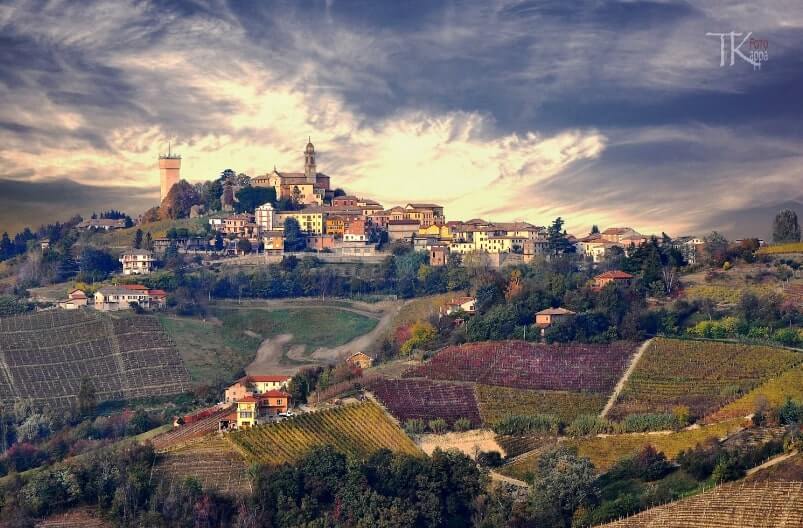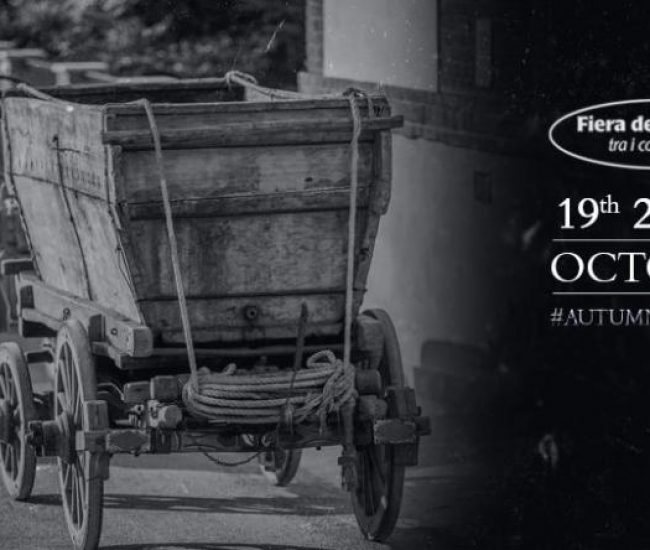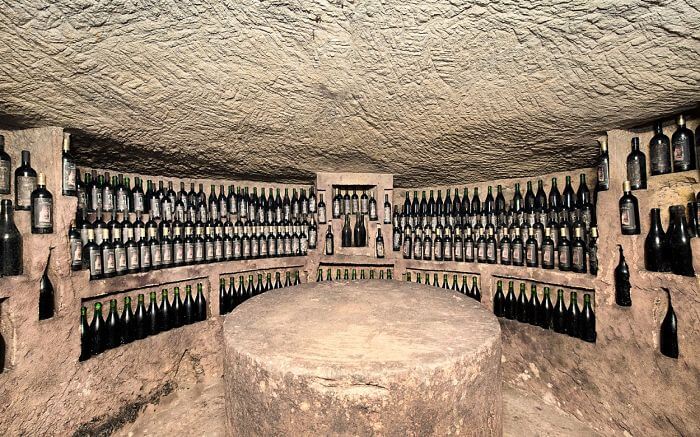Calosso Travel Guide
The name of Calosso, mentioned for the first time in 960, could derive from the noble roman Calluciusor Calocero, medieval term to denote San Calogero, revered in the small settlement until the mid 700.

The first settlement’s mention dates back to 960, while to find evidence of a fortified structure, they must wait the beginning of the Xlll century. During the municipal period, Calosso was an important fief of the Consortium of Acquesana, which also Canelli took part, created to protect the minor feuds against the expansionist ambitions of the great Asti’s families.
Calosso is now a small village perched on a hill. At the top of the town is located the fortress, occupied by an impressive defensive structure attested since the Xlll century. The castle preserves in part the oldest structures, particularly on the northern front, dominated by the massive cylindrical tower decorated with hanging arches and topped by battlements. Starting from the XVI, it has undergone a transformation that has led it so far to take on the appearance of a noble residence.
Where to Stay in Calosso?
What to see in Calosso?
Inside the ancient perimeter of the fortified city walls, stands out the Church of San Martino. Built on the site of a former worship place, it shows on its facade the signs of a nineteenth-century restoration that has widened the side aisles.

In the Town Hall’s ground floor (Via Roma, 11) is located the Museo del Combattente (Figther Museum), which exhibits uniforms of the First and Second World War, light and heavy weapons, as well as numerous small objects characteristic of military life.
In the old town of Calosso is held in autumn the “Fiera del Rapulé” (Fair of Rapulé), which refers to the tradition of celebrating the grape harvest time of San Martino’s bunches, also called “rapulin”, which are the small bunches left on the grapevine during the harvest. Subsequently they are pressed in a traditional manner with feet. During this occasion it is also organized a tour that promotes local food and wine products, that winds even within the “crutin”, dug under old town houses.
Small cellar: the “Crutin”
The “crutin” are a particular example of vernacular architecture linked to rural culture: it’s a matter of ancient cellars dug into tuff and with vaults made of bricks, used both for domestic keeping of bottles and foodstuffs, and as ice chests or tanks.The presence of these cellars is very widespread, insomuch as almost every house in the old town has one of these underground space.
The environments have very variable sizes, some of which have engraved on the walls the date of construction, which usually goes back to the XVIll and XIX centuries. Most “crutin” are privately owned and are accessible through the homes, but some are related to small wineries that were located in the village, among which is alive the Wine Cooperative of Calosso founded in 1904.

